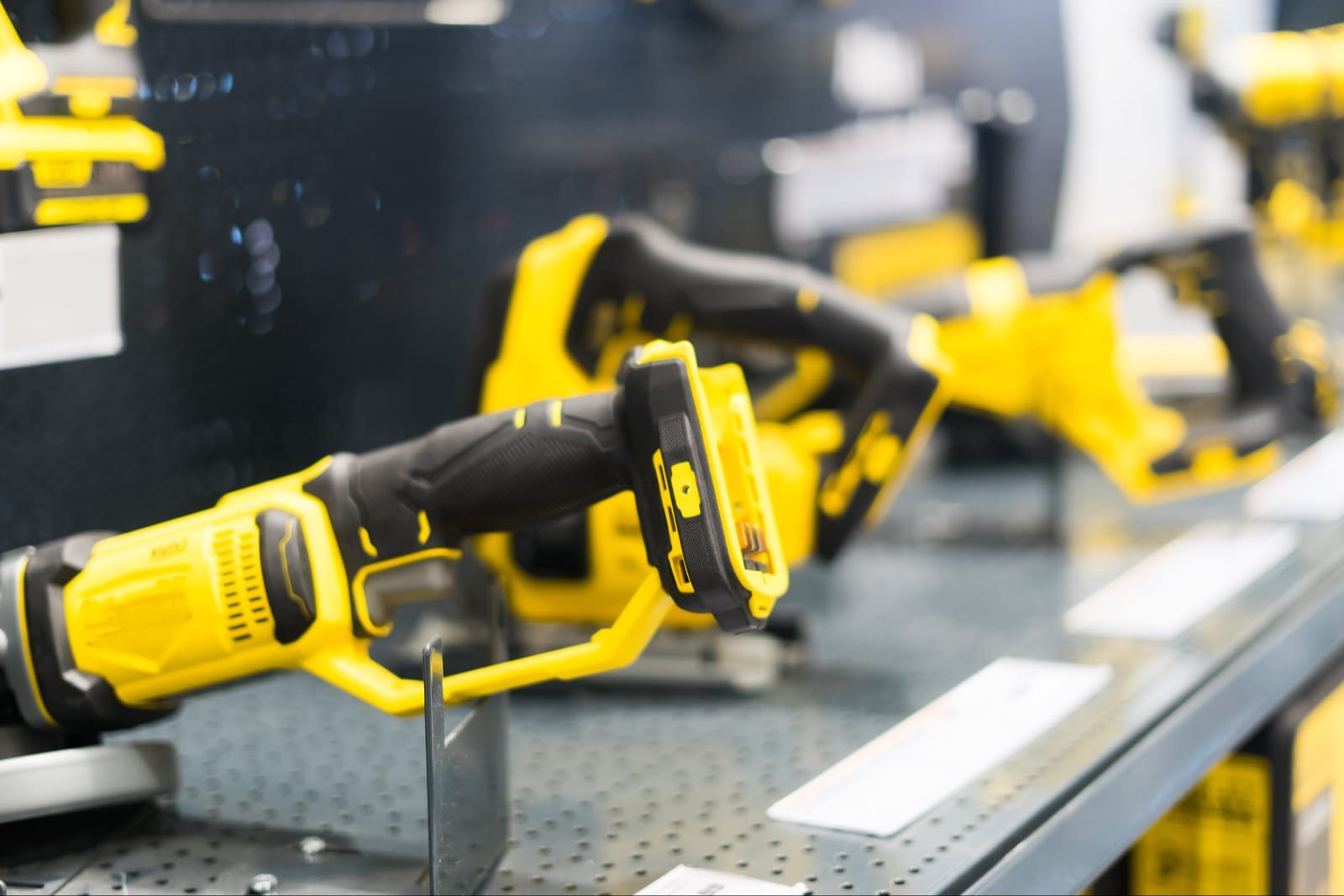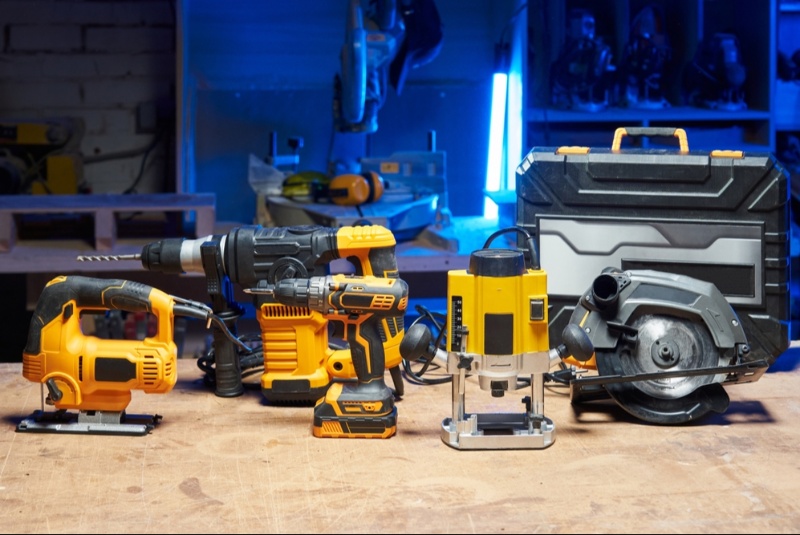Power tools are essential for any homeowner looking to tackle DIY projects, home repairs, or renovations. With the right set of tools, you can efficiently handle everything from simple fixes to more complex tasks, saving both time and money. However, with a vast array of options available, selecting the best power tools can be overwhelming. This guide will help you navigate the world of power tools, providing tips on what to look for, how to choose quality products, and which tools are essential for every homeowner’s toolkit.
Assess Your Needs and Skill Level
Before purchasing power tools, it’s important to assess your specific needs and skill level. Are you a beginner who needs basic tools for simple home repairs, or are you an experienced DIY enthusiast planning major renovations? Understanding your skill level and the types of projects you intend to undertake will help you determine which tools are essential and which features you should prioritize. Beginners may benefit from tools that are easy to use with safety features, while more experienced users might seek out professional-grade tools with advanced capabilities. By assessing your needs, you can make informed decisions and invest in tools that will be most useful to you.
Prioritize Essential Power Tools for Homeowners
For homeowners, certain power tools are essential for handling a wide range of tasks. A cordless drill is arguably the most versatile tool, useful for drilling holes and driving screws. A circular saw is indispensable for cutting wood, while a jigsaw allows for more intricate cuts. An oscillating multi-tool can handle a variety of tasks, from sanding to cutting. A power sander is essential for smoothing surfaces, and a shop vac is invaluable for cleaning up after projects. Prioritizing these essential tools ensures that you have the basics covered for most home improvement tasks, providing a solid foundation for your toolkit.
Choose Between Corded and Cordless Tools
One of the key decisions you’ll need to make is whether to invest in corded or cordless power tools. Cordless tools offer the advantage of portability and convenience, allowing you to work without being tethered to an outlet. However, they rely on battery power, which can limit their runtime and power. Corded tools, on the other hand, provide consistent power and are ideal for heavy-duty tasks that require prolonged use. Consider the type of projects you’ll be working on and whether mobility or continuous power is more important to you. Many homeowners find that a mix of both corded and cordless tools provides the best balance of convenience and performance.
Pay Attention to Build Quality and Durability
When investing in power tools, build quality and durability should be top priorities. High-quality tools are typically made from robust materials like metal and high-grade plastics, which can withstand the rigors of regular use. Look for tools with reinforced housings, solid handles, and smooth operation. Brands with a reputation for producing durable, reliable tools, such as DeWalt, Makita, and Milwaukee, are often worth the investment. While these tools may come with a higher price tag, their longevity and performance can save you money in the long run. By choosing tools that are built to last, you ensure that your investment will serve you well for years to come.

Consider the Tool’s Power and Performance
Power and performance are critical factors when selecting power tools. The tool’s power is often measured in volts (for cordless tools) or amps (for corded tools), with higher numbers generally indicating more powerful performance. However, the right amount of power depends on the tasks you plan to perform. For example, a cordless drill with 18-20 volts is sufficient for most household tasks, while a circular saw with 15 amps is ideal for cutting through dense materials. Additionally, consider the tool’s speed and torque, as these affect how efficiently it can handle specific jobs. By choosing tools with the appropriate power and performance for your needs, you can complete tasks more efficiently and with better results.
Evaluate Ergonomics and Ease of Use
Ergonomics and ease of use are important considerations, especially if you plan to use your tools for extended periods. Look for tools with comfortable, non-slip grips that reduce hand fatigue and provide better control. The weight of the tool also plays a role in usability; lighter tools are easier to maneuver, especially for overhead tasks, but they should still feel solid and well-balanced. Additionally, features like easy-to-reach controls, quick-change bits, and adjustable settings can enhance usability. By selecting tools that are ergonomic and user-friendly, you can work more comfortably and reduce the risk of injury or strain.
Consider the Availability of Accessories and Attachments
Many power tools come with a variety of accessories and attachments that can extend their functionality. For example, a drill with a wide range of bits and attachments can handle drilling, driving, and even mixing. Saws may offer interchangeable blades for cutting different materials, while multi-tools often include attachments for sanding, scraping, and cutting. When choosing power tools, consider the availability and cost of these accessories. Tools with a broad range of compatible accessories can save you money and space by allowing one tool to perform multiple tasks. By investing in versatile tools with a variety of attachments, you can expand your capabilities without needing to buy additional tools.
Check for Safety Features
Safety should always be a priority when using power tools. Look for tools that include built-in safety features such as blade guards, automatic shut-off, and overload protection. Tools with ergonomic designs and anti-vibration technology can also reduce strain and prevent injuries. Additionally, some tools offer features like lock-off switches to prevent accidental activation and dust collection systems to keep your workspace cleaner and safer. When using power tools, always wear appropriate protective gear, such as safety glasses, gloves, and ear protection, to minimize the risk of injury. By choosing tools with robust safety features, you can work with greater confidence and peace of mind.
Consider the Brand’s Reputation and Warranty
The reputation of the brand is another important factor when choosing power tools. Established brands with a history of producing reliable, high-quality tools are often a safer investment. These brands typically offer better customer support, more extensive warranties, and a wider range of compatible accessories. A good warranty is also crucial, as it provides protection in case of defects or issues with the tool. Look for brands that offer at least a one-year warranty, with options to extend coverage. By choosing tools from reputable brands with solid warranties, you ensure that your investment is protected and that you have support if something goes wrong.
Don’t Forget About Storage and Maintenance
Proper storage and maintenance are essential for keeping your power tools in good working condition. Investing in a sturdy toolbox or tool chest can help you organize and protect your tools from damage. For larger tools, consider a dedicated storage area in your garage or workshop where they can be safely stored. Regular maintenance, such as cleaning, lubricating moving parts, and checking for wear, will extend the life of your tools and ensure they perform optimally. Some tools may also require periodic calibration or battery replacement. By taking care of your tools and storing them properly, you can maintain their performance and longevity, ensuring they’re always ready when you need them.
Investing in the right power tools is crucial for any homeowner looking to take on DIY projects, repairs, or home improvements. By assessing your needs, prioritizing essential tools, and considering factors like build quality, power, ergonomics, and safety, you can choose tools that will serve you well for years to come. Whether you’re a beginner or an experienced DIY enthusiast, selecting high-quality, reliable tools will make your projects easier, more efficient, and more enjoyable. With the right tools in your arsenal, you’ll be well-equipped to handle any task that comes your way, transforming your home with confidence and precision.





